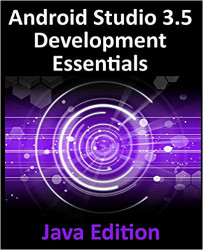SQLite is an embedded, relational database management system (RDBMS). Most relational databases (Oracle, SQL Server and MySQL being prime examples) are standalone server processes that run independently, and in cooperation with, applications that require database access. SQLite is referred to as embedded because it is provided in the form of a library that is linked into applications. As such, there is no standalone database server running in the background. All database operations are handled internally within the application through calls to functions contained in the SQLite library.
The developers of SQLite have placed the technology into the public domain with the result that it is now a widely deployed database solution.
SQLite is written in the C programming language and as such, the Android SDK provides a Java based “wrapper” around the underlying database interface. This essentially consists of a set of classes that may be utilized...



